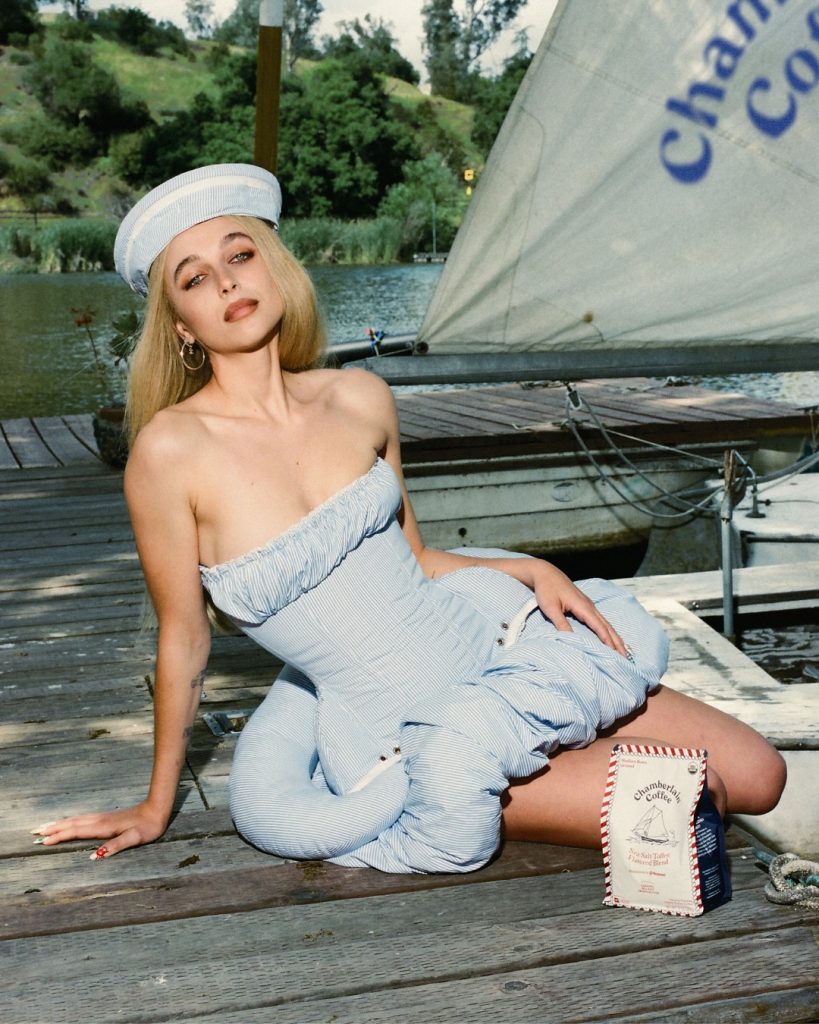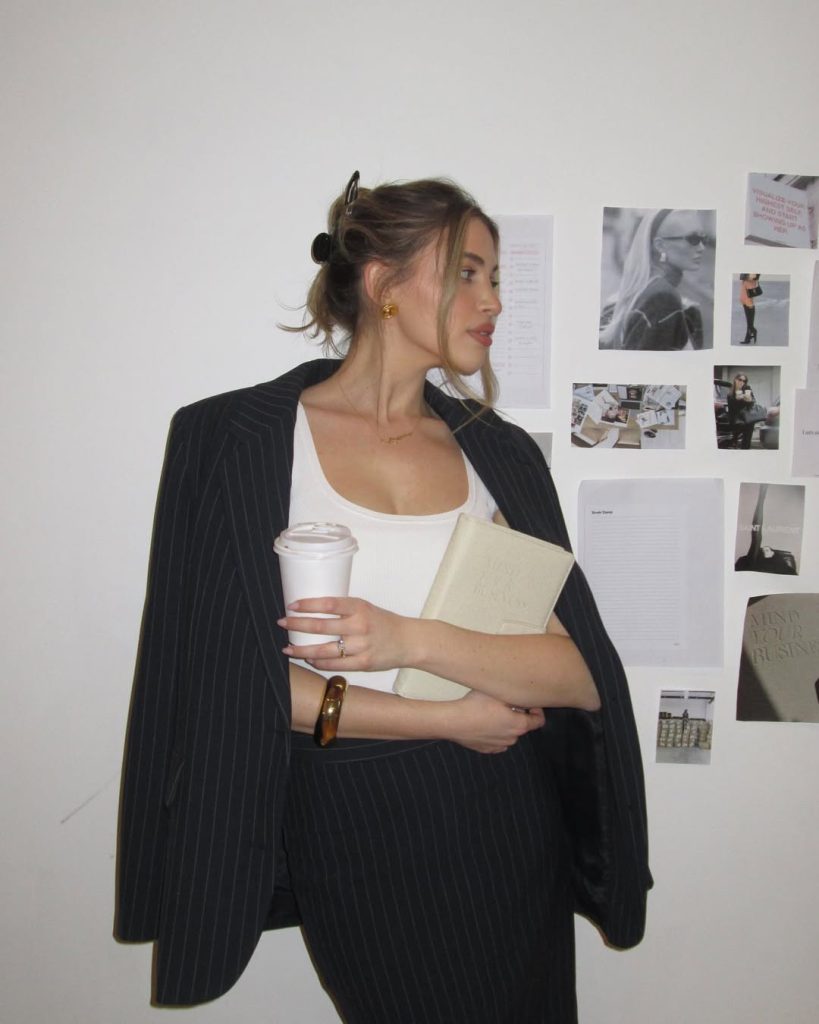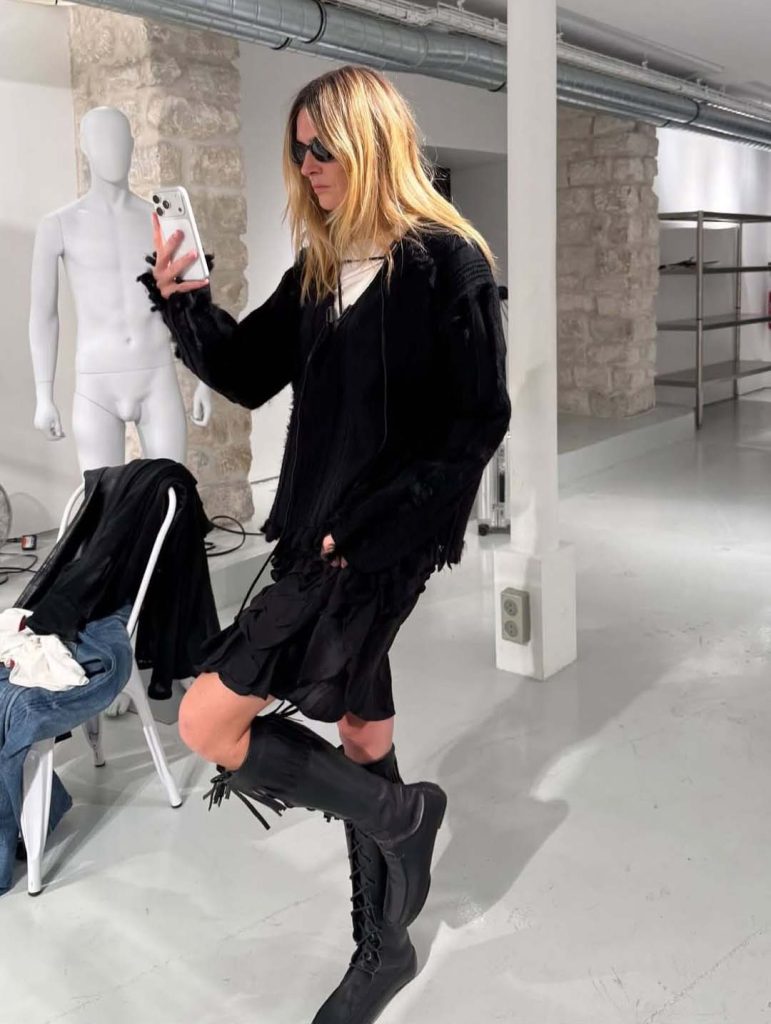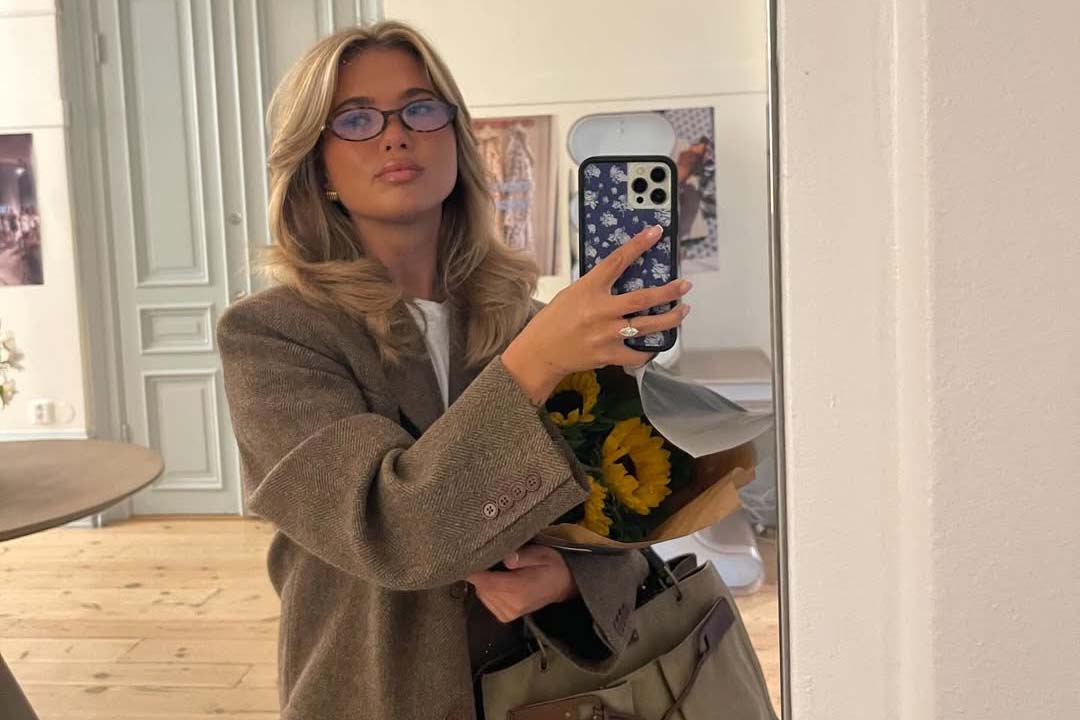How a generation of young women are transforming mirror selfies and ‘GRWM’ videos into fully fledged fashion and beauty businesses.
Scroll through Instagram on any given morning and you’ll see it: a softly lit bedroom, a girl in front of a mirror, phone tilted just so. It’s a scene so familiar it barely registers. But beneath that simplicity lies a complex and increasingly powerful engine of commerce — one that’s reshaping how style moves from personal expression to marketable brand.
What used to be dismissed as vanity posting has become a launchpad. Mirror selfies, ‘get ready with me’ videos, and low-stakes styling clips are now early-stage branding exercises for a growing class of young female creators building empires out of their bedrooms.

Aesthetic as strategy
The early influencer economy rewarded scale: glossy sponsored posts, aspirational trips, and big follower counts. Today, the power is shifting. Smaller, tightly defined communities — often built around one girl’s wardrobe, routine, or beauty rituals — drive more targeted engagement than mass-market celebrity campaigns ever could.
Look at creators like Matilda Djerf. What began as an Instagram feed of hair tutorials and mirror outfits grew into Djerf Avenue, a multimillion-dollar fashion label worn by girls from Stockholm to Seoul. Her brand didn’t emerge from a boardroom brainstorm; it was built post by post, over years, by cultivating a personal aesthetic that felt both intimate and aspirational.
Then there’s Emma Chamberlain, whose offhand personal style — thrifted vintage, hoodies, half-buttoned shirts — redefined what “influence” could look like. She parlayed that identity into Chamberlain Coffee, a brand that mirrors her irreverent, slightly chaotic persona. Her image didn’t follow a marketing plan. It was the marketing plan.

From personal taste to intellectual property
This is the crucial shift: taste, once a soft asset, is now hard currency. A mirror selfie isn’t just documentation; it’s an early-stage product test. Affiliate links and soft drops allow creators to measure demand before manufacturing at scale. Brands follow their audiences rather than the other way around.
In 2024, affiliate revenue among female fashion and beauty influencers on Instagram and TikTok grew by over 40%, according to data from Lyst. Smaller creators — typically those with 10–100k followers — consistently outperform larger influencers on conversion rates. It’s not about reach anymore; it’s about resonance.
A new generation of founders understands this intuitively. Nitsan Raiter, for example, built her beauty brand Mind Your Skin not from glossy campaign shoots, but through years of sharing her personal skincare routine on Instagram Stories. By the time she launched, she had a built-in customer base who trusted her taste because they’d watched her evolve it in real time.
The rise of the one-woman brand
In practical terms, many of these businesses begin almost accidentally. A creator posts a thrift haul or a handmade jewellery drop. The response is immediate. DMs turn into orders. Orders turn into spreadsheets. Within a year, she’s negotiating with suppliers in Portugal or fulfillment partners in Los Angeles.
But behind the casual tone lies a shrewd understanding of audience behaviour. The most successful fashion and beauty creators don’t try to reach everyone. They speak directly to a niche group — often young women who share not just a style, but a worldview. Their drops sell out not because they’re aggressively marketed, but because they feel personal.
This intimacy is strategic. A “drop” on Instagram becomes a focus group. A mirror outfit post functions as pre-launch hype. It’s a loop that bypasses traditional advertising altogether.

The shifting power balance with legacy brands
Legacy fashion and beauty houses have noticed. Where they once dictated trends, they now court them. Instead of sponsoring campaigns, they collaborate with individual creators who command small but fiercely loyal audiences.
“Micro-creators can move product faster than some of our mid-tier retail campaigns,” says a marketing director at a major beauty label (who asked not to be named discussing strategy). “When their followers trust their taste, they don’t need convincing. They just buy.”
This dynamic has tilted the balance of power. It’s no longer unusual to see a 23-year-old influencer with a home studio out-performing global fashion brands on product sell-through — with a fraction of the overhead.
The cost of being the product
But with power comes exposure. When your face, body, or personal taste is the brand, the line between professional and personal can collapse. Creators face intense pressure to maintain an image that isn’t just flattering but commercially viable. Burnout, parasocial scrutiny, and the demand to “stay on trend” all factor into this new model of entrepreneurship.
Some influencers have responded by building teams earlier: bringing in managers, accountants, even production partners to professionalise their operations. Others are more protective, keeping things intentionally small to preserve their autonomy.
This isn’t just a story about cute outfits and morning routines. It’s a story about a new kind of business built at the intersection of aesthetics, intimacy, and commerce.
From mirror to empire
In many ways, the mirror is the new boardroom. What looks like personal style is often structured strategy. A girl filming a GRWM in her bedroom might be soft-launching a beauty line. A thrift haul could be a mood board for a future label.
The playbook is being written in real time, one outfit at a time — and young women are at the centre of it.
